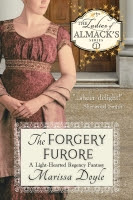Considering that she had so many of them, it’s hardly surprising that Queen Victoria’s grandchildren were, in many ways, a varied bunch. We’ve already met Wilhelm, the near-caricature Prussian…and today we’ll meet his cousin, a woman who was queen of a nearby country but couldn’t have been more different.
Marie Alexandra Victoria was born on October 29, 1875, at her parents’ home in Eastwell, Kent—her parents being Alfred, Duke of Edinburgh and second son of Queen Victoria, and Grand Duchess Marie of Russia, only daughter of Tsar Alexander II. Baby Marie, soon nicknamed “Missy” was an unusually pretty child from birth…and not just because she was a princess; she really was genuinely lovely as you can see from her pictures. So lovely, in fact, that from an early age, her cousin George—later King George V— was quite smitten with her. But Marie’s mother loathed most of her English in-laws and did not want any of her children marrying their English cousins…so she stage-managed her innocent and eager-to-please daughter into an engagement to Ferdinand, Crown Prince of Romania (that is the pair at right, at about the time of their marriage). He was a shy, awkward man, ten years older than his bride-to-be. The pair were married in January 1893, just a few months after Marie’s seventeenth birthday.
Life in Romania was difficult for Marie. King Carol, Ferdinand’s uncle, was a stern, austere man, and his wife Queen Elisabeth, who called herself Carmen Sylva and had exaggeratedly artistic tendencies and didn’t care to be upstaged by a beautiful young princess. Romania itself was only 15 years old and not very stable. And when she became pregnant within two weeks of her wedding, she wondered why she felt so ill—no one had told her the facts of life. She gave birth to a son, named Carol after his great-uncle…and with a few months was expecting once again. She was subject to the whims of her husband’s aunt and the control-freakishness of his uncle, and was, in a word, miserable.
So it was no surprise that eventually, she would rebel. She had a series of love affairs, and it is more than probable that the last three of her six children were not Ferdinand’s. But she was discreet (mostly), and she and her husband remained, if not devoted to each other, at least committed to preserving the outward appearance of their marriage. She also began to defy King Carol’s strictures and lead a more public life, endearing herself to Romanians in the process not just with her looks, but with her genuine interest in their welfare.
It took adversity to really bring out Marie’s best qualities. With the outbreak of the Second Balkan War and then WWI, she became a nurse, not only directing nationwide nursing efforts but herself working in wards…and then, only a few months later, became queen after King Carol’s death. Her enormous popularity only grew, and at the end of the war she herself went to Paris to take part in the peace negotiations and obtain aid for her battered country. She also discovered a passion for writing, publishing books of fairy tales and fables, travelogues, and eventually her memoirs.
But what should have been golden years afterward were marred by the antics of her eldest son Carol, heir to the throne. He was spoiled and mentally unstable, and had already run away once during the war and illegally married a commoner. Though that marriage was dissolved and one to a suitably royal princess contracted, Carol remained unsteady, and in 1925 ran away with another woman, abdicating his position as heir to the throne…until Ferdinand’s death two years later, after which he schemed and plotted and finally returned to Romania, overthrowing his own small son and taking his renounced throne back, and doing his best to drive his brother, sisters, and mother from the country. Furthermore, the 30s saw upheavals in Greece and Yugoslavia, countries into which her daughters had married, and increasingly paranoid Carol instituted a police-state style of government that she hated. So it was perhaps a mercy that she became ill with liver disease and died in 1938, and did not live to see Romania dismantled by Hitler and Stalin, and ravaged later by a Soviet-backed takeover.
This is, necessarily, a highly truncated look at an interestig woman. For a more in-depth look at Marie's life and times, I highly recommend Hannah Pakula's The Last Romantic, now sadly out of print but still available used through on-line booksellers.
Subscribe to:
Post Comments (Atom)








2 comments:
how interesting! I read about mad king George's daughters after you (I believe) recommended their joint biography, and it was fascinating. May need to check this one out as well.
Yes, that was probably me--Princesses was excellent. I think this book is out of print, but worth digging up, as is the same author's bio of Vicky, Queen Victoria's eldest daughter.
Post a Comment